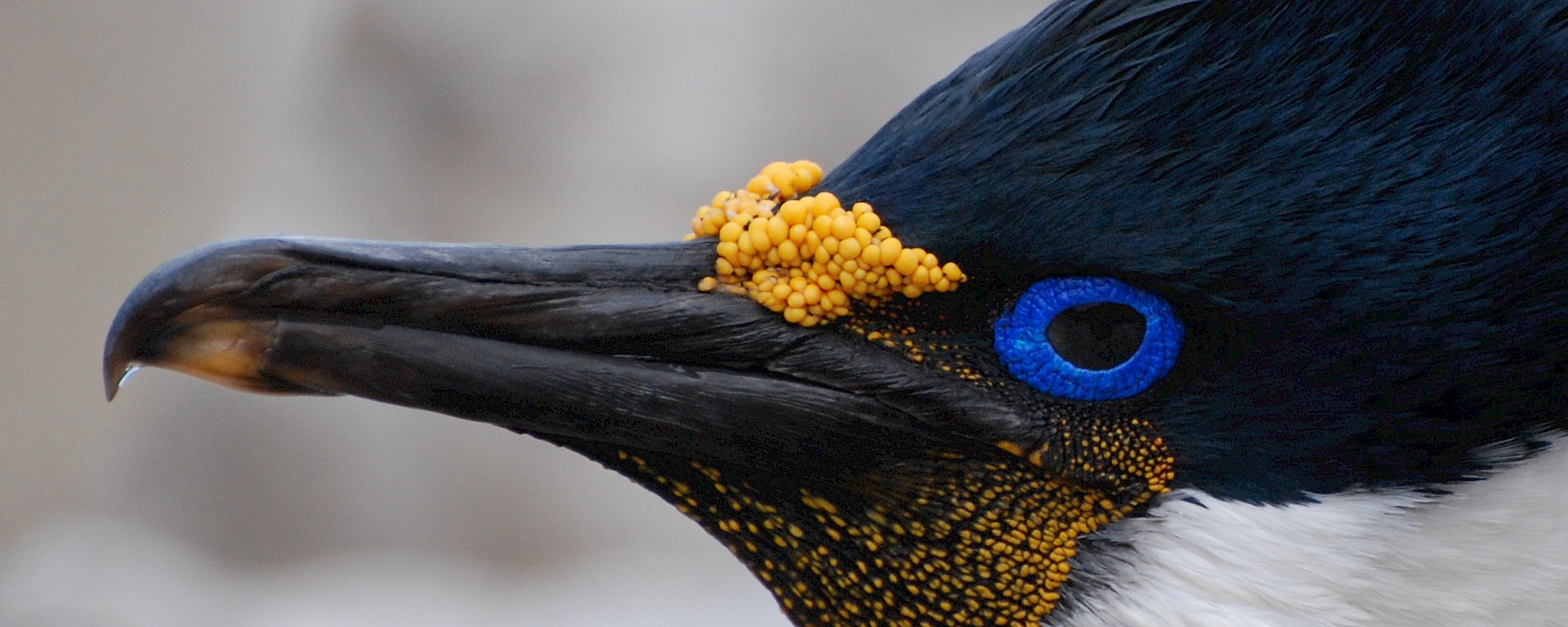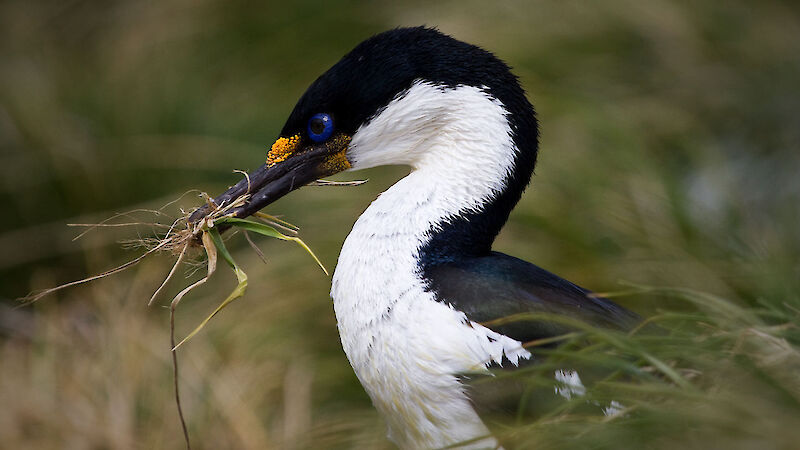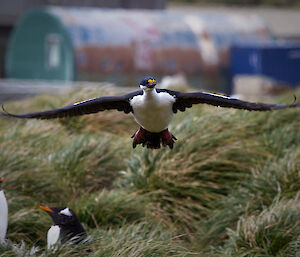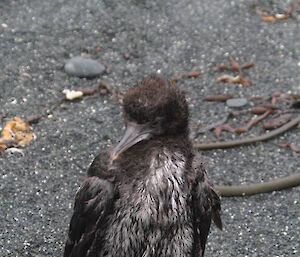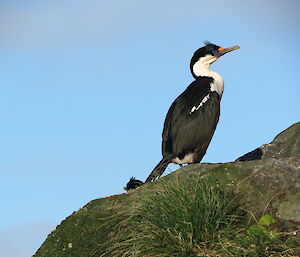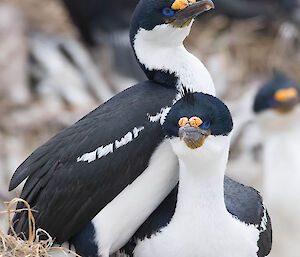Scientific name: Phalacrocorax atriceps
Physical description and related species
Blue-eyed cormorants, also know as imperial shags, have a white breast, a black back and largely white cheeks and neck. The bill is dark brown and the feet pink. They are a large bird, the adult is 69 to 74 cm in length and has a wing span of 1.1 m.
The taxonomic status of these breeding populations is presently unclear, but it is likely that they will be recognised as endemic populations.
Distribution and abundance
Blue-eyed cormorants breed in colonies on the west coast of southern South America, at South Georgia, South Sandwich, South Orkney and South Shetland Islands and on the Antarctic Peninsula south to 68° S. Breeding populations are also present on Heard Island, Iles Kerguelen and Macquarie Island.
A large breeding colony of approximately 1,000 pairs was discovered on Heard Island in the 2000/01 season. The previous breeding population had been believed to be between 100 and 200 pairs in three colonies.
Blue-eyed cormorants are gregarious throughout the year, and sometimes gather in large flocks, particularly in the winter when thousands often form dense rafts at sea.
Conservation status: least concern
Breeding
Courtship activities begin in late August to early October. Two to three eggs are laid in October through to early January, and these hatch in November to February. Fledging occurs in January to March, and the adults leave the colonies in April.
Diet and feeding
Blue-eyed cormorants mainly feed on fish and invertebrates. They normally dive to depths of approximately 25 m, however, some dives can reach 100 m.
Sheathbills, a scavenging and predatory bird, take eggs of blue-eyed cormorants, and leopard seals attack the birds at sea.

